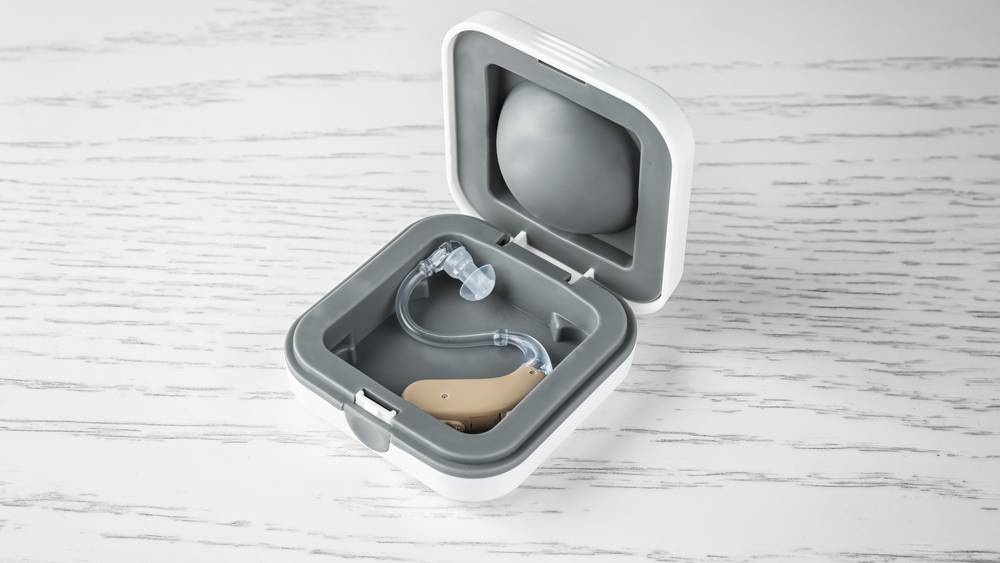
How Should I Store My Hearing Aids When Not in Use?
Frank Cote
•2023-09-13
Proper storage of hearing aids extends their lifespan and ensures optimal performance. Discover key tips and recommended practices in our guide.

Frank Cote
•2023-09-13
Proper storage of hearing aids extends their lifespan and ensures optimal performance. Discover key tips and recommended practices in our guide.
Hearing aids are valuable instruments designed to improve our quality of life. Like all sophisticated electronics, they require care, not only when they're working away in our ears but also when they're at rest. Storing these devices correctly when they're not in use is essential to maintain their functionality and longevity.
First and foremost, it's crucial to understand the delicate nature of these devices. They are designed to be durable and resilient to daily wear and tear, but that doesn't mean they're invincible. Their internal components can be sensitive to moisture, dust, and extreme temperatures.
Moreover…
Given their small size, they can easily be lost if not stored appropriately. Recognizing these vulnerabilities is the first step towards ensuring their proper storage.
Taking meticulous care of your hearing devices ensures that they remain functional and serve you effectively for years to come. When you're not using them, it's imperative to store them appropriately to prevent potential damages and maintain their efficiency.
Storing them isn't merely about finding a spot on your bedside table; it's about safeguarding your investment from various environmental factors that could compromise their performance. Let's look deeper into the best practices for storage, helping you ensure that these essential tools remain in top-notch condition:
Cool and Dry Atmosphere
Temperature fluctuations and humidity can adversely impact the delicate internal components of your devices. Prolonged exposure to high temperatures can deteriorate the mechanisms, while moisture may lead to corrosion, significantly reducing their lifespan.
Therefore, it's crucial to choose a storage area away from windows, radiators, and bathrooms, ensuring that the place is devoid of direct sunlight and not prone to dampness. Consider using a dehumidifier box or drying container, especially designed for such devices, to provide an additional layer of protection against moisture.
Protection from External Damages
Everyday household scenarios, like an inquisitive toddler or a playful pet, can become potential hazards for your devices. To safeguard them from accidental falls or curious hands and paws, it's prudent to store them in a designated drawer or a specific container.
Using a protective case, preferably a hard one, can also shield them from any unintended pressures or impacts, ensuring their structural integrity and safeguarding the intricate internal components.
Keeping Away from Dust and Debris
Over time, even microscopic dust particles can settle and infiltrate the crevices of your hearing tools. When this dust accumulates, it can obstruct the microphone and speaker ports, leading to muffled sounds or decreased performance. A storage spot with minimal dust exposure, perhaps inside a closed cabinet or container, is ideal.
Additionally, making it a routine to give them a gentle wipe with a soft, dry cloth before storage can further minimize the chances of dust buildup, ensuring clear audio output every time you use them.
Owning a well-crafted storage case for your hearing devices is a step that cannot be overstated. While many devices come equipped with a complementary case, there may be instances where one is either not provided or is no longer fit for use due to wear and tear. In such cases, procuring a replacement is highly advisable. An efficient storage case should possess the following features:
Robust Exterior
A hard-shelled exterior offers a resilient barrier against accidental drops, ensuring the delicate devices within remain undamaged.
Adequate Ventilation
Cases that incorporate tiny ventilation perforations are invaluable. They promote consistent air circulation, mitigating the risks of internal condensation and aiding in maintaining a dry environment.
Balanced Dimensions
While the case should be sufficiently compact to facilitate hassle-free portability, especially during travel, it shouldn't be diminutive to the point where it's easily lost amidst other belongings.
Recognizing the intricate design and sensitivity of hearing aids, there's a range of specialized storage solutions tailored to meet their needs:
Desiccant Drying Kits and Electronic Dehumidifiers
These ingenious solutions are crafted to draw out and retain any traces of moisture that might permeate the device. Particularly for individuals residing in areas with high humidity, or those prone to sweating, these tools are indispensable in preserving device longevity.
Ultraviolet Cleaning Systems
These multifunctional devices are game-changers. Not only do they adeptly dry the hearing aids, but they also harness the power of UV radiation to sanitize them, markedly diminishing potential ear infection risks.
Consistent, routine checks before tucking away your devices can make a world of difference in their upkeep. Here's a checklist to consider:
On occasions where you foresee not utilizing your hearing devices for prolonged durations, heed the following guidelines:
The way you store your devices plays a significant role in ensuring their longevity and optimal functioning. By following the guidelines above, you can help ensure that your hearing aids remain in perfect working condition for many years to come.
 Read Review
Read Review
 Read Review
Read Review
 Read Review
Read Review
 Read Review
Read Review
 Read Review
Read Review
 Read Review
Read Review
 Read Review
Read Review
 Read Review
Read Review
 Read Review
Read Review
 Read Review
Read Review
A hearing aid is a device that amplifies sound waves to make them louder so they can be heard better with pure and refined quality if you’re experiencing hearing loss. Usually, it has one or more tiny microphones inside that picks up the sound, an amplifier that does the job in increasing the sound volume, and speakers that will send this improved and amplified sound to your eardrums so you can hear them better. This may be worn in or behind the ear, depending on the design and style.
The price of a hearing aid may vary and this would greatly depend on several factors such as the hearing aid type, the technology being used, and the available features. On average, a basic pair of adult hearing aids may cost around $2,000 and $3,000, while the advanced models with more features and better technology may have higher price tags.
There is no definitive answer to which hearing aid brand or model is the best, as it all comes to your specific hearing conditions, preferences, needs, and budget. Every hearing aid manufacturer may offer their devices with different kinds of features and this could significantly affect their prices. Some of the most popular hearing aid brands include Jabra, Eargo, Hear.com, Audious, MD Hearing, and Audien, so it’s worth checking out their products.
© 2024 TopHearingAid.Reviews All rights reserved.